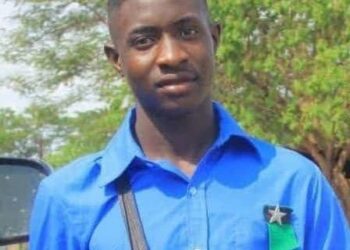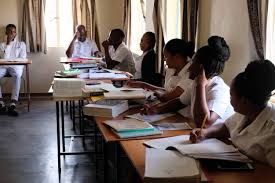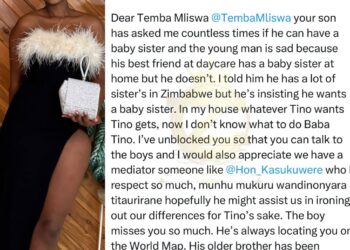IN another historic medical feat, which is evidence of the country’s medical capabilities that have undergone transformation under the leadership of President Mnangagwa, a team of doctors at United Bulawayo Hospitals (UBH) successfully performed a ground-breaking four-hour life-saving surgery of removing a metal bar lodged in an accident victim’s abdomen, chest and back.
The metal bar reportedly came off a trailer, went through the driver’s door and st@bbed the victim on the abdomen through to the back, leaving him trapped in the car, only to be rescued after the Beitbridge Fire Brigade was called in to cut the metal bar.
The successful operation solidifies UBH’s position among the leading institutions in cutting-edge surgery.
This comes after another complex surgery in October last year, where doctors at the hospital, working with their colleagues from Mpilo Central Hospital, managed to save the life of an artisanal miner from Gwanda district.
The miner had been a victim of a gruesome attack, with a spear thrust through his mouth lodged in his neck.
The hospital also managed to help a nine-year-old girl give birth last year. Across town, last year, doctors at Mpilo Central Hospital successfully saved the life of an artisanal miner from Bubi district, Matabeleland North province, who had a spear lodged in his skull.
In the latest surgery, the provincial medical director for Bulawayo Metropolitan Province, Dr Maphios Siamuchembu, was also part of the doctors who carried out the procedure, where the victim’s large intestines, back muscles, skin, diaphragm and kidney were damaged “quite badly”.
The liver was also reportedly injured to some extent, “but it was not too bad for his survival”.
UBH acting clinical director Dr Harrison Rambanapasi said the complicated procedure at the hospital set another precedent in the country’s medical history.
“On Friday night (16 February), we received a patient who had been involved in an accident in Beitbridge. The patient had a huge metal bar, supposedly from a trailer, stuck in his trunk and going into his abdomen. We immediately assembled a team of specialists, which included general surgeons, urologists, anaesthetists, theatre nurses and support staff,” said Dr Rambanapasi.
He said they did a computerised tomography (CT) scan and several X-rays, but before that, they had to enlist the help of the fire department in cutting the bar short to facilitate the CT scan.
“The young man was operated on on Saturday by a team of six surgeons. I am particularly thrilled because everything (blood tests, CT scan and the operation itself) were done at UBH, a Government or public hospital, which is accessible to all Zimbabweans regardless of social status.
“I am happy to report that the operation went well and he is recuperating well . . . so far, there are no major concerns. I also wish to congratulate our surgical team, led by Dr Tongesai Mukosera, for the great work they are doing. Remember, we had a similar case last year that was managed successfully at UBH by the surgical team. Our surgeons are relatively young but already they have amassed a lot of experience and expertise to be able to do these complicated procedures,” said Dr Rambanapasi.
Amidst the celebrations of this medical victory, Dr Siamuchembu highlighted that the operation not only underscores the hospital’s monumental achievement but also reflects Zimbabwe’s strides in healthcare, offering sophisticated medical treatments locally.
“So, basically, I was called late Friday night about the patient and told that he was on his way. I was told over the phone that although he had a metal bar stuck to his abdomen, chest and the back, he was talking and in pain. He was aware of his surroundings and what was happening. Our team of middle-level doctors, including registrars (doctors training to be specialists) and senior hospital officers, informed the intensive care unit and everyone prepared to receive the patient. They waited for him to arrive and gave him the necessary treatment to preserve his life and make sure he does not deteriorate. We were all in communication and we asked for X-rays to be taken, and then we realised we needed a CT scan to better plan for the removal of the metal bar,” added Dr Siamuchembu.
He said the patient could not fit in the CT scanner with the metal bar, so they arranged with the fire brigade so that part of the metal bar could be cut.
“By Saturday afternoon, he was taken to the theatre. The lead surgeon was Dr Munyaradzi Magara, and I joined the team after they had already started the operation. We were worried about vital organs being severely damaged. We were particularly worried that the right lung, liver and kidney were damaged.
“We were also worried about the large bowel, the small intestines and the large blood vessel called the inferior vena cava. We thought if the blood vessel was damaged, the patient would bleed to death during the operation. There was also the danger of the spine being damaged,” he said.
He added: “He was fortunate because the bar missed his lung, although it entered the space where the lung is found, called the pleural space. The diaphragm was damaged quite badly. The liver was also injured to some extent, but it was not too bad for his survival. The kidney was also partly damaged. The small intestines were spared. The large intestines were badly damaged, so we had to cut part of it out and fashion a colostomy. This also predisposed him to serious infection, which we hope will not happen. His back muscles and skin were also badly damaged.”
Although repairing all the damage was quite difficult and challenging, he said, the teamwork among the different doctors, surgeons, anaesthetists, theatre nurses and the supporting staff was excellent.
“The patient is still alive and we have hope that he will heal and be discharged. We also faced some challenges with some of the surgical instruments which are now old and not working optimally. We were expecting a difficult operation, and so we were ready for anything, so we were relieved to find that the damage to the vital organs was not so bad as to be incompatible with life.
“We did not have to remove the kidney, and we did not have to repair any large blood vessels or the small intestines. Our fear now is of overwhelming infection. We hope that our cleaning act, together with the antibiotics he is getting, are adequate to prevent severe infection,” he said.
Dr Siamuchembu said the ground-breaking surgery at UBH was a powerful reminder of the capable medical hands in the country.
“I think the message to the public really is that this country has capable hands. People do not necessarily need to travel across borders and oceans for most of the conditions. If our Government gives our professionals adequate tools of the trade and an enabling and incentivising environment, we are capable of doing much more, much better than we are currently doing. Our people also need to have faith in our professionals,” he said.
The team comprised Dr Magara, Dr Mukosera, Dr Brian Gwanda, Dr Crispin Ntoto, Dr Josephine Kusano, Dr Nicholas Wazadza (hospital medical officer), Dr Christopher Zvakare, and junior resident medical officers Dr Addington Chiguvare and Dr Ashley Pasihapori.
Attending in the theatre were also Dr Trevor Gambakwe, Dr Nobert Singine, anaesthetist Dr Nozizwe Maphosa-Shava and radiologists Dr Danboy Gandanhamo and Dr Davison Dzamatira.
Dr Magara, who led the team that conducted the surgical operation, said the victim was lucky to be alive after sustaining life-threatening injuries.
“The first worry when we heard the patient with such an injury was being referred was the possibility of a major bleed. When the patient arrived at UBH, we noted that he fortunately wasn’t actively bleeding, although he had bled before arrival,” he said.
“He required a blood transfusion. The next concern was to pre-operatively determine the organs which had been injured so that the team prepared the right materials to use. The metal bar, which was still in situ, had entered the right lower chest through the upper part of the abdomen to exit just to the right of the spine in the lumbar region. A significant length of the metal (could be a metre long) hung outside the body.
“The metal had to be cut by the fire brigade so that the patient could have imaging by CT scan to map out the tract. After inserting an underwater seal drain to the right chest, the abdomen was opened in order to identify and manage the injuries, as well as safely dislodge the metal,” said Dr Magara.
SOURCE : ZIMBABWE SITUATION









